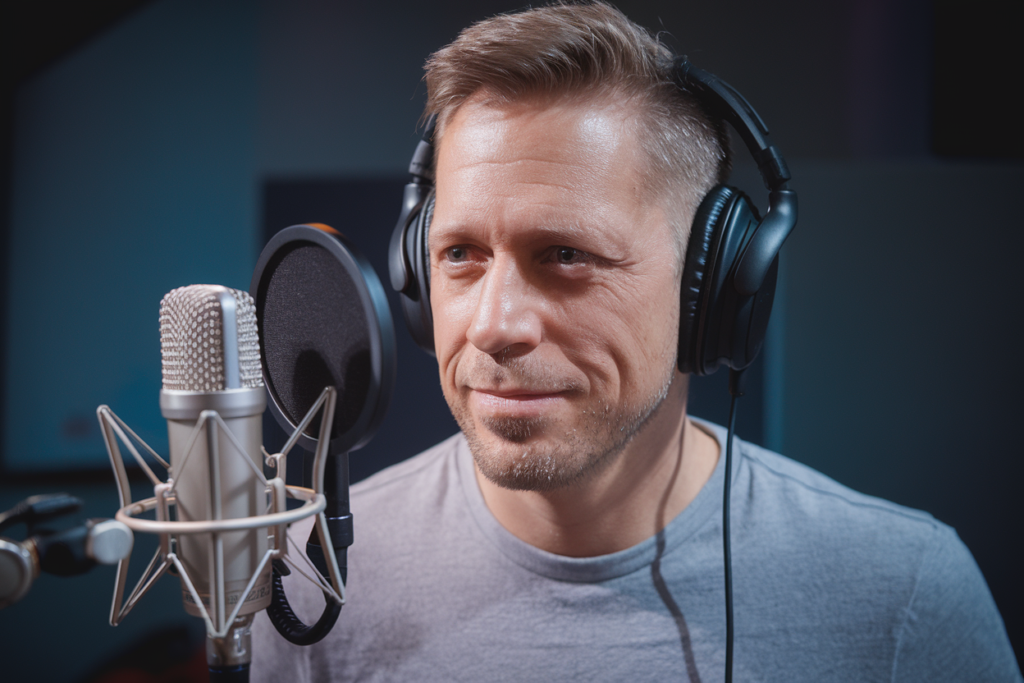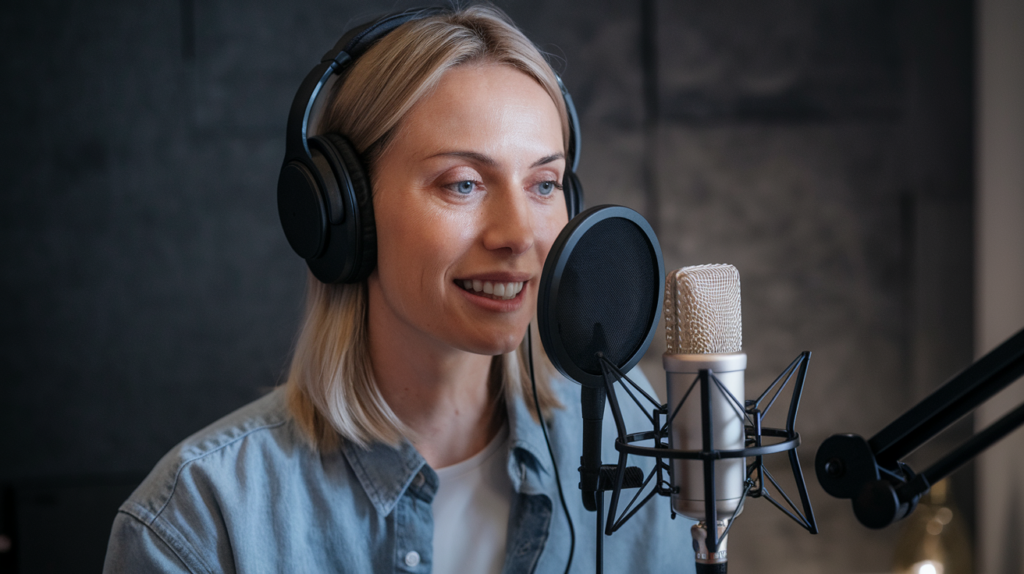Key Takeaways
- Authenticity Matters: Authentic German voiceovers build trust and enhance audience connection, crucial for impactful projects.
- Cultural Nuances: Understanding regional dialects and cultural references enriches the performance, making it relatable to the target audience.
- Pronunciation Accuracy: Clear enunciation and mastery of unique sounds in German are vital for delivering genuine voiceovers.
- Choosing the Right Voice Artist: Selecting a voice talent experienced in your project’s genre ensures an authentic delivery aligned with your message.
- Quality Equipment is Key: Invest in high-quality recording equipment and editing software to produce clear and polished audio results.
Ever wondered what makes a German voiceover truly authentic? Whether you’re in the creative industry or just curious about the art of voice acting, nailing that genuine sound can be a game changer. Authenticity not only captures your audience’s attention but also builds trust and connection.
Understanding Authentic German Voiceovers
Authentic German voiceovers resonate deeply with audiences, creating a connection that enhances the overall impact of any project. To achieve this level of authenticity, it’s essential to understand the nuances involved in delivering genuine performances.
Importance of Authenticity
Authenticity in German voiceovers elevates projects by building trust and credibility. When you choose a voice talent who embodies the true essence of the language, it captures your audience’s attention and fosters a relatable experience. Whether it’s for commercials, documentaries, or animations, an authentic sound can significantly influence how your message is received. A skilled voice actor knows how to infuse emotion and personality into their delivery, making every word count.
Cultural Nuances in Voiceovers
Cultural nuances play a critical role in crafting effective German voiceovers. Language isn’t just about words; it’s also about context and tradition. Understanding regional dialects—like Hochdeutsch (Standard German) or Bavarian—can enhance authenticity. Additionally, being aware of cultural references or idiomatic expressions enriches the performance. Your chosen voice artist should reflect these subtleties to ensure that their delivery resonates with your target audience at all levels—from tone to pacing and emotional nuance.
By focusing on these elements, you create an environment where your project thrives through genuine communication tailored specifically for a German-speaking audience.
Key Tips for Authentic German Voiceovers
Achieving authenticity in German voiceovers involves several key elements. Here are some essential tips to ensure your project resonates with the audience.
Pronunciation Accuracy
Pronunciation accuracy plays a vital role in delivering authentic German voiceovers. You want your voice talent to master the nuances of sounds unique to the language. Focus on clear enunciation and correct vowel sounds, as these can alter meaning significantly. Listening to native speakers or using pronunciation guides can enhance your understanding and help select a voice actor who embodies this skill.
Emphasizing Regional Dialects
Emphasizing regional dialects adds richness and depth to your voiceover project. Germany boasts various dialects, each carrying cultural significance. Choosing a voice artist familiar with specific regional accents can make the content feel more relatable and genuine. Whether it’s Bavarian, Swabian, or Berlinerisch, utilizing these dialects captures local flavor and engages listeners effectively.
Matching Tone and Emotion
Matching tone and emotion is crucial for connecting with your audience through German voiceovers. The chosen voice talent should convey feelings that align with the project’s message—be it excitement for an advertisement or warmth for an educational video. Ensure you communicate clearly what emotions you wish to evoke; this will guide the delivery style of your selected voice over actor, resulting in a more impactful performance that resonates deeply with viewers.
By focusing on these aspects, you can elevate your projects through authentic communication tailored specifically for a German-speaking audience.
Choosing the Right Voice Artist
Selecting the right voice artist is crucial for achieving authenticity in your German voiceovers. The right voice talent can bring your project to life and resonate with your audience, making them feel connected to your message.
Evaluating Experience and Style
When evaluating a voice actor, consider their experience and style. Look for artists who’ve worked on similar projects or have a background in the genre you’re targeting. Some might excel in commercials, while others shine in documentaries or animations. Reviewing their demo reels helps you understand their range and versatility. Pay attention to how they handle emotion and tone—do they convey the feelings that align with your project’s message? A well-suited voice artist doesn’t just read lines; they embody characters and narratives uniquely.
The Role of Casting in Authenticity
Casting plays an integral role in ensuring authenticity for German voiceovers. When choosing a voice over talent, think about cultural nuances, regional accents, and dialects that matter to your audience. A native speaker familiar with specific regions adds depth to performances, enhancing relatability. It’s not just about sounding good; it’s about capturing the essence of the language itself. By prioritizing these elements during casting, you create an authentic atmosphere that fosters trust with listeners and amplifies engagement across various formats.
Essential Tools and Techniques
To achieve authentic German voiceovers, you need the right tools and techniques. These elements enhance your recordings and ensure a polished final product.
Voice Recording Equipment
Using high-quality voice recording equipment is essential for capturing clear sound. Invest in a professional microphone, as it significantly impacts the quality of your voiceover. USB microphones are convenient for beginners, while XLR microphones offer superior audio fidelity for seasoned voice actors. Additionally, consider using pop filters to minimize plosive sounds and acoustic panels to reduce background noise and echo. A reliable audio interface also plays a crucial role in connecting your microphone to your computer while ensuring optimal sound quality.
Software for Editing
Editing software allows you to refine your recordings for a professional finish. Popular options include Audacity, Adobe Audition, and Reaper—each offering unique features tailored to different skill levels. With these programs, you can cut out mistakes, adjust volumes, and apply effects like compression or EQ to enhance clarity. Familiarizing yourself with editing techniques not only improves the overall sound but also helps convey emotions more effectively through your chosen voice talent’s performance.
By equipping yourself with the right tools and mastering editing techniques, you’re well on your way to producing authentic German voiceovers that resonate powerfully with audiences.
Conclusion
Authentic German voiceovers can elevate your projects and create lasting connections with your audience. By prioritizing pronunciation accuracy and embracing regional dialects, you’ll enhance relatability and engagement. Selecting the right voice talent who understands cultural nuances is crucial for conveying the true essence of the language.
Equipping yourself with quality recording tools and mastering editing techniques will ensure your voiceovers resonate deeply. Remember that emotion plays a vital role in connecting with listeners, so always match tone to the project’s message. Focusing on these elements will help you achieve authenticity and make a significant impact in the creative industry.
Frequently Asked Questions
What is the importance of authenticity in German voiceovers?
Authenticity in German voiceovers is crucial as it helps capture the audience’s attention and fosters trust. A genuine sound resonates deeply, enhancing the overall impact of creative projects across formats like commercials, documentaries, and animations.
How can one achieve authenticity in German voiceovers?
To achieve authenticity, focus on accurate pronunciation, understand regional dialects, and match tone with emotion. These elements help convey feelings that align with the project’s message and enhance relatability with audiences.
Why are regional dialects significant in voice acting?
Regional dialects add depth to performances by making them more relatable to specific audiences. Voice actors familiar with local accents can infuse cultural nuances into their delivery, enriching the overall narrative experience.
What should I consider when choosing a voice artist for a project?
Consider a voice artist’s experience and style relevant to your project genre. Look for talent who has previously worked on similar projects to ensure they can connect effectively with your target audience.
What tools are essential for producing high-quality German voiceovers?
Essential tools include professional microphones, pop filters, acoustic panels for sound quality, and reliable audio interfaces. Editing software like Audacity or Adobe Audition is also important for refining recordings and enhancing clarity.







